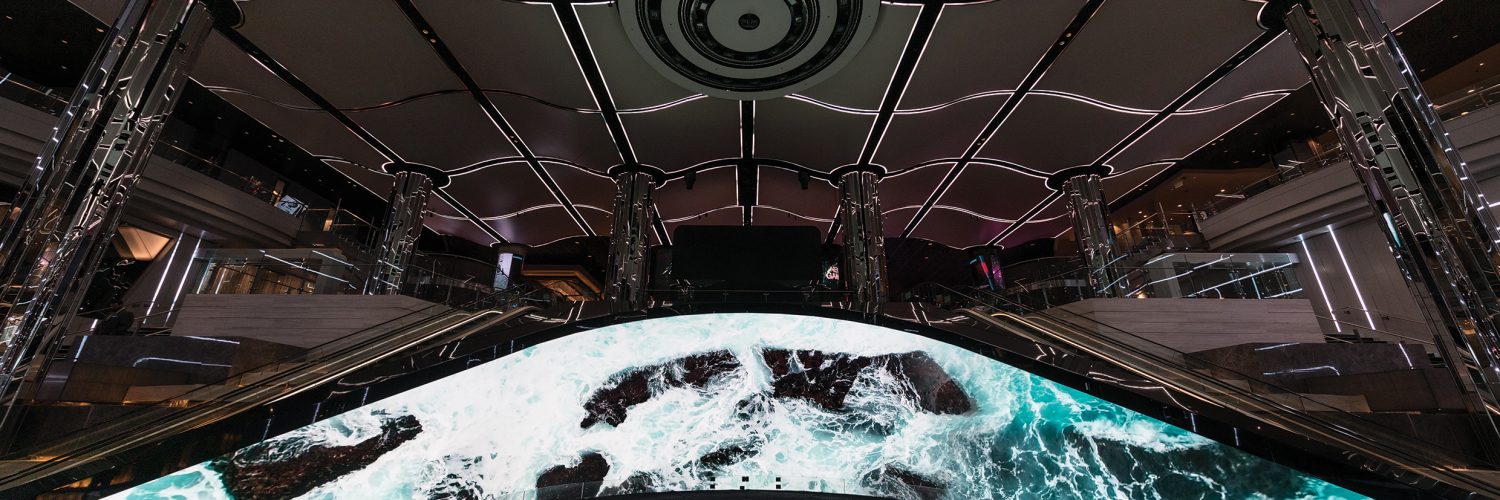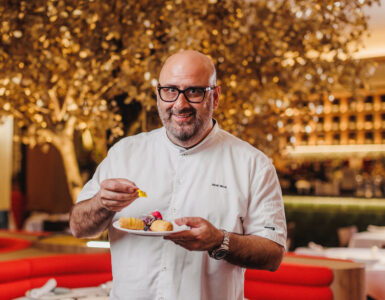We chat to Bruce Ramus, light artist and the man responsible for our stunning Grand Foyer installation, about why public art can be a light in dark times.
As art galleries slowly begin to open or re-invigorate their spaces, in their absence we realised how much we missed art and the important roles in plays in our community. While art galleries were closed, we often found ourselves scouting public art on our permitted, self-isolated walks and it got us thinking about why public art is so important? We turned our questions to one of our go-to light artists, Bruce Ramus of RAMUS, to discuss the meaning of public art.
How long have you been doing what you do?
I have been a light artist for over 40 years and the first part of my career was on the road when I began creating and directing light shows in the entertainment realm for music artists like U2, David Bowie, R.E.M and James Brown. I then moved into the architectural and urban design realm, creating more permanent light artworks when I formed RAMUS studio.
What do you love about your job?
I love the relationships I get to be part of and the new awareness that comes each day. Every project has its own expression, waiting to be discovered and revealed in an artistic form, which creates a very fluid way to work. I also love the idea of always becoming clearer and more open to what’s needed.
We are one of the few studios in the world that exclusively creates light and digital art installations. Envisioning completely new works and constantly working with unique collaborators, from community groups, emerging artists to animators and construction project managers. It’s exciting, challenging and the experience is always fresh.
Why does public art and installation matter now more than ever?
Installation and public art can offer a means of public expression, which in the time of isolation seems even more important than ever. Art is going through a transformative time, and I think it could become less exclusive which would welcome.
What does it bring to people?
It brings an awareness of how we are all connected, through our shared expression.

What does it do to a space?
Art can allow a space to breathe, to develop its’ own sense of purpose. Art can offer quality or vibe that elevates a space, or grounds it, depending on the piece… it helps us see space differently, and appreciate our role in the energy of that space.
What are things you always think about when conceptualising pieces for specific places?
I think about creating space, not taking up space. I think about the quality of light and movement, and how it can encourage others to find themselves in that light.
What is unique about working with The Star Sydney’s Grand Foyer space?
I was the artistic director of the project at The Star Sydney Grand Foyer, developing the world-first permanent immersive experience – which is part-light, part-water, part performance space, and part-interactive art gallery.
I led a great team of animators, builders, designers and technicians, to produce this spectacular entry statement that expresses our interpretation of Sydney’s’ light and movement. It also offered creative opportunities for local and international artists, animators and cinematographers to collaborate with us.
Part of the uniqueness of the space is the transient nature of it – we could build something that accompanied people on their journeys through the space. The key to the project came more from the people we worked with at The Star. They were always passionate and present, looking for quality at every turn, and that quality and those relationships can be seen in the outcome of the work.
Learn more about RAMUS’ public art on their website.















